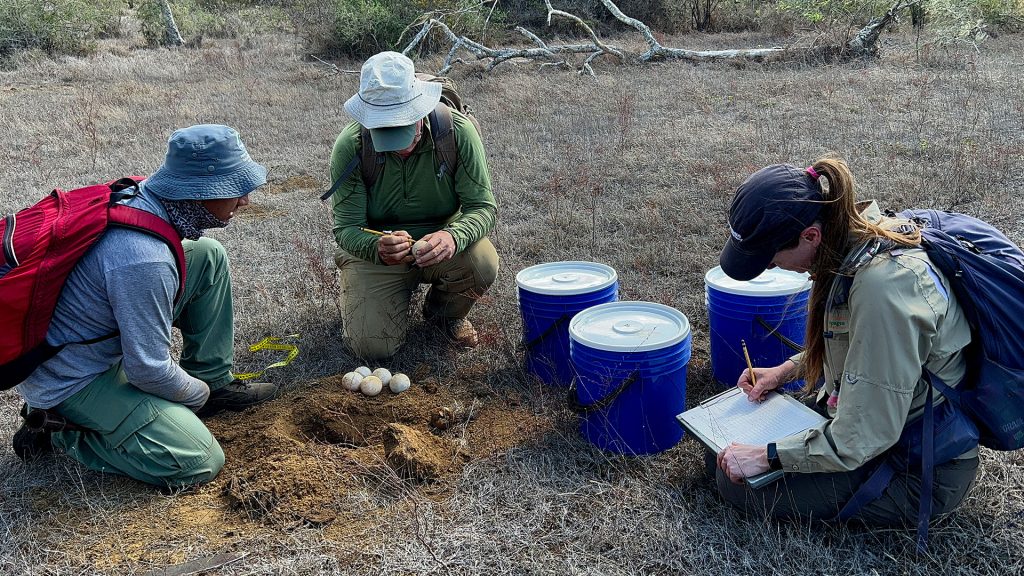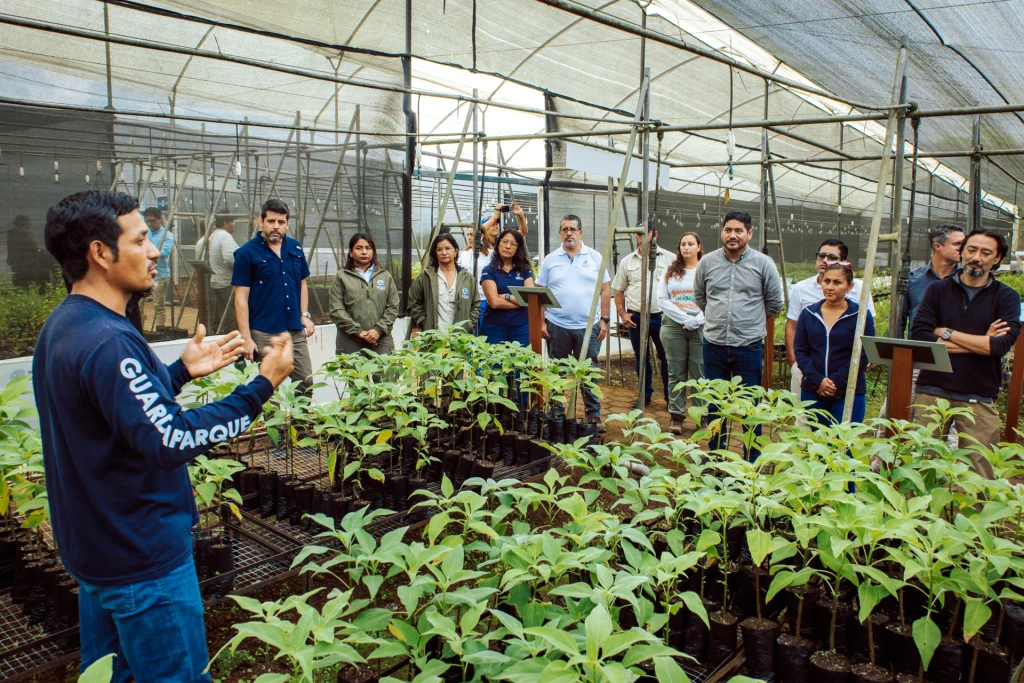Our scientific research and conservation efforts are focused on the 12 giant tortoise types that inhabit Galapagos. We remain vigilant regarding the dire situation of certain species. The Santiago Island has 1000-1200 individuals, mainly males. According to the IUCN Red List of Threatened Species this species is listed as Critically Endemic since 2015.
Transfer and Collection of Hatchlings and Eggs
Recently, a team of scientists and park rangers with the Galapagos National Park Directorate embarked on a trip to the giant tortoise breeding areas on Santiago Island. The main goal of the expedition was to collect eggs and newly hatched tortoises to be transferred to the Breeding and Rearing Center, located on Santa Cruz Island. This center has significantly improved hatching rates and egg hatching rates. During the operation, 169 hatchlings and 169 eggs were successfully transported.
Each egg that is brought to the Breeding Center is a step in the right direction for the conservation of giant turtles. In order to guarantee the survival of the species, eggs and hatchlings are transported by air. We can overcome logistical obstacles by using helicopter transport, which increases hatching rates and hatchlings’ survival.
Long-term Recovery

After they reach the size and condition necessary to survive in the natural habitat, these young tortoises are returned to their native island to support the Santiago population. It should take around five years. This is a crucial step in restoring the giant tortoise populations of Santiago to their historical size and range.
Washington Tapia is our General Director and he has stressed that it is more important than ever to take research and management measures. He said that, “similar to what was achieved with other tortoise populations like Espanola in more critical circumstances, we aim at outpacing the specter extinction, and contributing to the restoration population, thus assisting in the ecological recovery of the island.”
Thanks to the generosity of donors who care about conservation, the collaboration between Galapagos Conservancy, the Galapagos National Park Directorate and Galapagos Conservancy is a key component of the strategies of the archipelago for ecosystem restoration and recovery of giant turtle populations.


